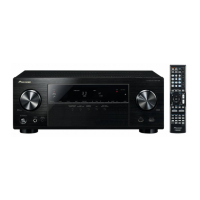
Do you have a question about the Pioneer VSX-1028-K and is the answer not in the manual?
| Channels | 7.2 |
|---|---|
| Type | AV Receiver |
| Frequency Response | 5 Hz - 100 kHz +0 dB/-3 dB (Analogue Input) |
| Total Harmonic Distortion | 0.08% |
| HDMI Inputs | 6 |
| HDMI Outputs | 2 |
| Audio Formats Supported | Dolby TrueHD, DTS-HD Master Audio |
| Weight | 22.5 lbs (10.2 kg) |
| 3D Support | Yes |
| 4K pass-through | Yes |
| DAC | 192 kHz/24-bit |
| Audio Return Channel (ARC) | Yes |
| Input Sensitivity/Impedance | 200 mV / 47 kΩ |
| Phono Input | Yes |
| Bluetooth | Yes |
| Power Output per channel | 80 W |
| Network Features | DLNA |
| USB | 1 (Front) |
| Signal-to-Noise Ratio | 100 dB |
| USB Port | 1 |
| Network Connectivity | Ethernet |
| Supported Audio Formats | MP3, WAV, AAC, WMA, FLAC, AIFF |
| Dimensions (W x H x D) | 435 x 173 x 390 mm |
| Power Output (8 Ohms) | 80 W |
Confirms the included accessories for the receiver setup.
Provides guidelines for proper placement and installation of the receiver unit.
Instructions for installing batteries into the receiver.
Details factors affecting the remote control's functionality.
Explains the functions and color-coding of the remote control buttons.
Details the various indicators on the receiver's front panel display and their meanings.
Describes the buttons and controls located on the receiver's front panel.
Illustrates and describes the connection terminals on the receiver's rear panel.
Explains different surround system configurations based on speaker count.
Provides instructions for connecting speakers using bare wire or banana plugs.
Details standard surround connections and options for height/wide/B speakers.
Explains how to connect speakers for bi-amping and bi-wiring for improved sound.
Guides through speaker system settings for height, wide, B speakers, bi-amping, and ZONE 2.
Shows how to connect TVs and playback devices using HDMI and other connections.
Instructions for connecting other audio devices and additional amplifiers.
Details how to connect AM loop and FM wire antennas for optimal reception.
Explains how to set up and use multiple independent audio systems in different rooms.
Instructions for connecting the receiver to a network via LAN for Internet radio and PC audio.
Guide for connecting a Bluetooth adapter for wireless music playback.
How to connect an iPod/iPhone/iPad for audio playback and control via the receiver.
Instructions for playing audio and photo files from USB storage devices.
Guide for connecting MHL devices for high-quality video and audio playback.
Final step for connecting all components and plugging the receiver into power.
Guides through the automatic room acoustic calibration process for optimal surround sound.
Configures input assignments for connected components to match remote control buttons.
Allows selection between Expert and Basic modes for accessing receiver functions.
Enables changing the Graphical User Interface display language.
Introduces the Home Menu for making settings and checking system status.
Basic instructions for playing audio and video sources with the home theater system.
Details how to play music and navigate files stored on an iPod/iPhone/iPad.
Instructions for playing audio and photo files from USB memory devices.
Lists supported music and photo file formats for network and USB playback.
Guide for connecting MHL devices for high-quality video and audio playback.
Instructions for tuning and saving FM/AM radio stations.
Details pairing and music playback using a Bluetooth adapter.
Explains different listening modes for surround sound and stereo playback.
Describes various advanced surround modes for enhanced audio experiences.
Guides on using Stream Direct modes for purest audio reproduction by bypassing processing.
Allows switching between saved MCACC presets for different listening scenarios.
Explains how to switch between analog, digital, and HDMI input signals.
Details Phase Control feature for coherent sound reproduction and optimal sound image.
Highlights receiver features accessible via LAN connection like Internet radio and PC audio.
Guides on selecting and playing content categories like Internet Radio, Pandora, Media Server.
Explains the technologies used for network playback, including DLNA and Windows Media Player.
Lists supported music file formats for network playback.
Explains synchronized operations possible with compatible Pioneer TVs and Blu-ray players.
Details how to connect components for synchronized operation via HDMI.
Guides on configuring receiver settings like Control, ARC, and PQLS for HDMI function.
Lists prerequisites for enabling synchronized operations with Control with HDMI.
Explains how to enable PQLS for higher quality digital audio transfer via HDMI.
Provides important warnings and considerations for using the Control with HDMI feature.
Details various audio settings for enhancing sound, including MCACC, EQ, and Phase Control.
Explains video settings like Resolution, Progressive Motion, and Advanced Video Adjust.
Allows selection of speaker configurations like SB/FH, SB/FW, Speaker B, and Bi-Amp.
Guides on operating sub zones (ZONE 2, HDZONE) for independent audio playback.
Instructions for configuring network settings via a web browser interface.
Allows setting a timer for the receiver to automatically enter standby mode.
Enables adjustment of the front panel display brightness.
Allows selection of the HDMI output terminal (OUT 1, OUT 2, or OUT 1+2).
Provides a way to view current receiver settings for various features.
Procedure to reset all receiver settings to factory defaults.
Details the Remote Setup mode for configuring remote control operations.
Instructions for operating multiple Pioneer receivers with a single remote control.
Guides on assigning preset codes to control other audio/video components.
Procedure for directly selecting preset codes for component control.
Explains how to teach the remote control new commands from other devices.
Procedures for erasing programmed settings or learned signals from the remote.
Provides a chart detailing remote control functions for various audio/video components.
Guides on using the Advanced MCACC system for detailed sound field calibration.
Allows customization of sound field settings beyond the Full Auto MCACC procedure.
Provides detailed manual adjustments for speaker settings and acoustic calibration.
Allows viewing calibrated speaker settings, levels, distances, and wave controls.
Features for managing MCACC presets: renaming, copying, and clearing.
Guides on changing speaker settings, input assignments, OSD language, and network setup.
Detailed customization of speaker system parameters for optimal surround sound.
Configuration of receiver's network settings including IP address, proxy, and standby.
Enables or disables automatic input switching for MHL-compatible devices.
Access to various customized settings like Auto Power Down, Volume Setup, and Remote Control Mode.
Step-by-step guide to updating the receiver's firmware using Safari.
Addresses common problems like no power, no sound, and system errors with remedies.
Resolves issues like speaker switching sounds, broadcast reception noise, and strange playback.
Troubleshoots problems with no image, noisy picture, or unnatural motion.
Addresses issues with settings not saving, display errors, and key lock.
Solutions for when the remote control is unresponsive or cannot operate other components.
Addresses HDMI indicator blinking, picture/sound issues, and MHL device operation.
Troubleshoots problems with network access, USB device recognition, and iPod connectivity.
Resolves problems with Web Control display and wireless LAN connection setup.
Brief descriptions of main surround sound formats like Dolby and DTS.
Information on iPod compatibility, AirPlay, and Windows 7.
Details software licenses and file formats supported by the receiver.
Provides guidance on speaker layout, distance, angle, and orientation for optimal sound.
Offers configurations and notes for troubleshooting HDMI signal routing issues.
Defines audio formats, decoding technologies, and sound field improvement techniques.
An alphabetical index of receiver features and their corresponding page numbers.
Lists the technical specifications for the receiver's amplifier, audio, tuner, and video sections.
A comprehensive list of manufacturer preset codes for controlling external components.
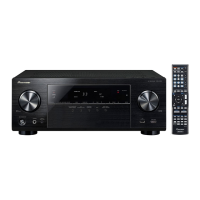

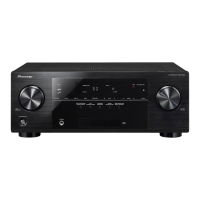

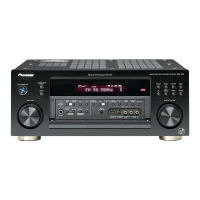
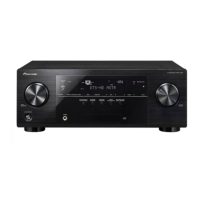
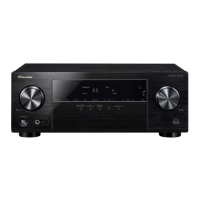
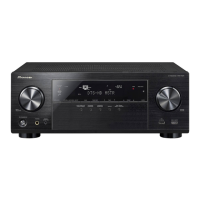
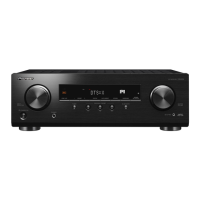
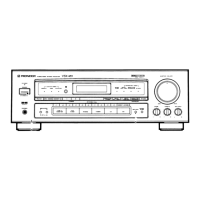
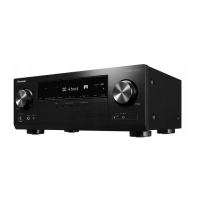
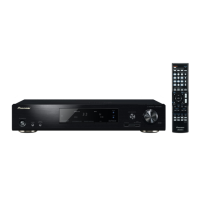
